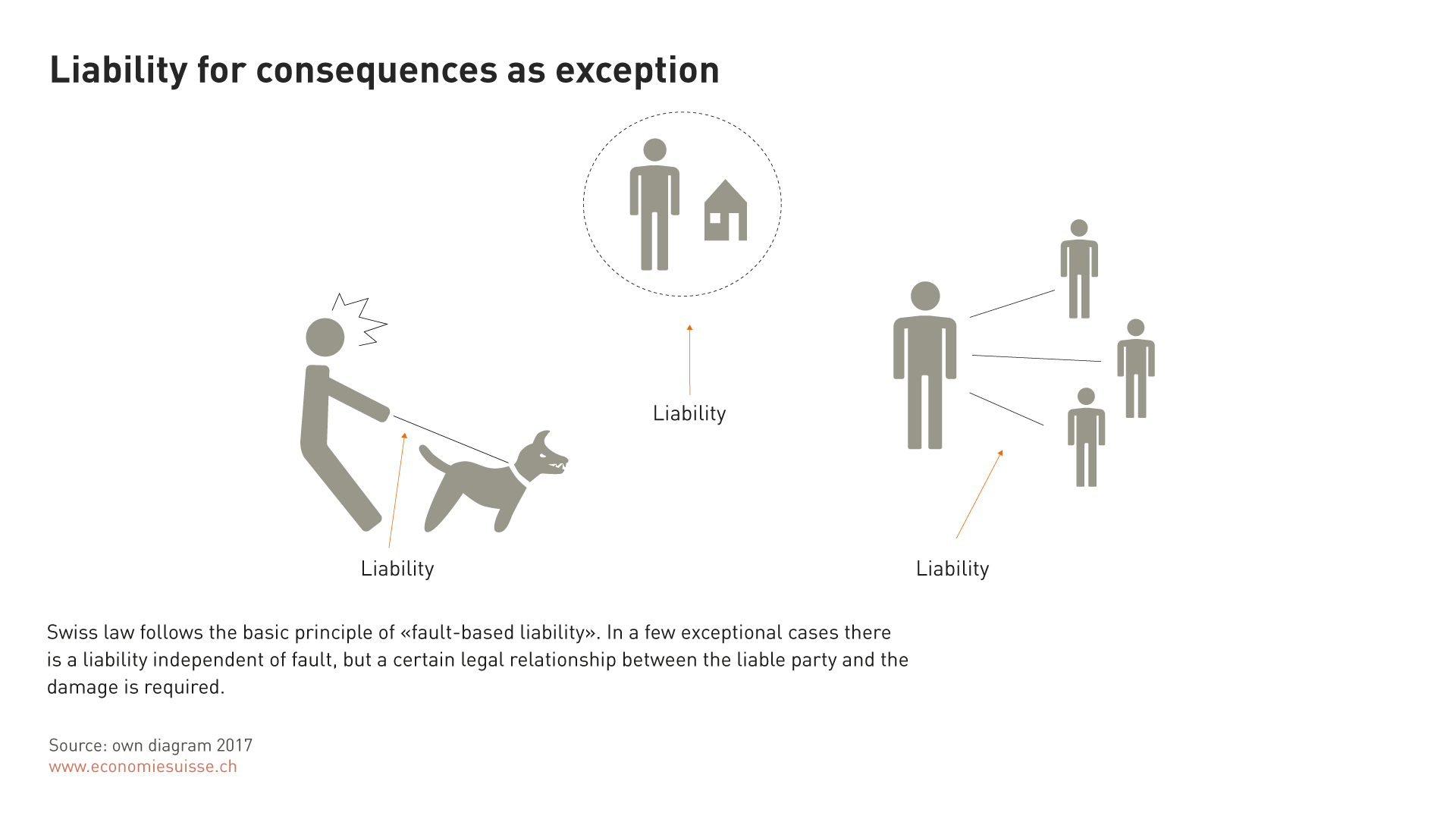Solutions rather than Litigation
- Introduction Executive summary | Positions of economiesuisse
- Chapter 1 Costly and Harmful Bogus Claims
- Chapter 2 SMEs are also affected
- Chapter 3 Principles of liability
- Chapter 4 Corporate responsibility in Switzerland for large companies
- Chapter 5 Weak points of the Initiative
- Chapter 6 Deeper legal analysis
- Chapter 7 The standpoint of economiesuisse
Principles of liability
Normally: no liability without fault
Swiss law follows the basic principle of "fault-based liability". This means that a person who unlawfully and culpably causes loss or damage to another shall bear liability. Therefore the basic idea is that liability only exists when a wrongdoer him-/herself acts wilfully or negligently.
Exception: liability for consequences
There are exceptions to this principle. In some cases, no fault on the part of the person liable to pay damages is required, but there has to be a certain legal relationship between the liable party and the damage. The following examples show cases where this "liability based on causality" (strict liability) is applied.
In the case of liability for animals, the keeper of the animal is liable for loss or damage caused by the animal unless he/she proves that he/she took all necessary care in keeping and supervising the animal. The type of proof depends on the specific circumstances.
With property owner's liability, the owner of a structure or property (e.g. a road or a house) is liable for damage caused by a defect in the property. The owner is only exempt from this liability if he/she proves that there was no defect.
In the case of employer's liability, the employer or ordering party is liable for its ancillary staff. This applies even if he/she was not personally at fault. Generally, however, if the entity is an independent company, staff cannot be classified as "ancillary staff".
The employer may be released from liability if he/she proves that he/she took the care that was appropriate under the circumstances to avoid loss or damage. Duties of due care may include the necessary care in selecting ancillary staff, care in giving instructions and directives, care in the supervision, monitoring and control of the ancillary staff, and care in organising the work and the company.
Figure 2
Swiss law follows the basic principle of «fault-based liability». In a few exceptional cases there is a liability independent of fault, but certain legal relationships between the liable party and the damage is required.

All these types of liability for consequences are already obvious exceptions to the principle of fault-based liability. They all have in common that the loss or damage event entered the sphere of the person liable: The liable party realistically could have prevented the damage, or could gain relief if it can show that no fault can be attributed to the party itself.





